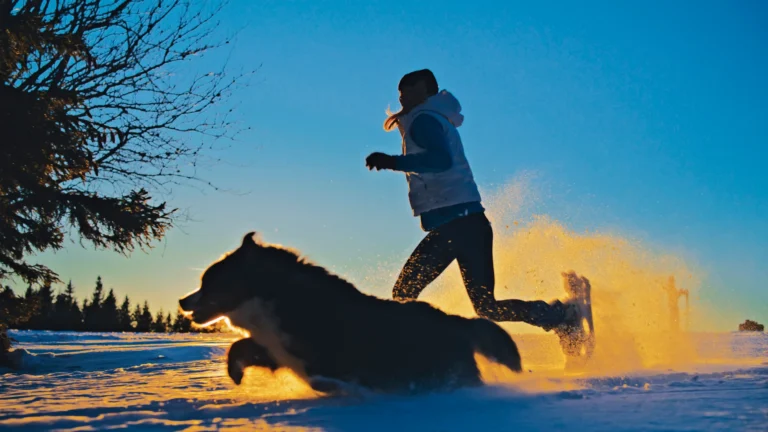Many dog owners dream of exploring the great outdoors with their furry companions, but summer hiking can pose unique challenges. As you begin on these adventures, it’s crucial to be prepared for any potential health issues your dog may encounter along the way. In this post, we’ll cover practical first aid tips you should know, ensuring you can handle minor injuries and emergencies, so both you and your dog can enjoy a safe and enjoyable hiking experience this summer.
Essential Preparations for a Safe Hiking Experience
A successful hiking adventure with your dog requires thorough preparation to mitigate potential hazards. Assess the trail difficulty, weather conditions, and your dog’s physical capabilities. Choose a location with ample shade and water sources, and tailor your hiking duration to your dog’s stamina and comfort level. Consider the time of day for your trip; early mornings or evenings can help avoid the heat of midday. Ensuring your dog is physically ready for the hike can greatly enhance the experience for both of you.
Packing the Right First Aid Kit
Your first aid kit must cater specifically to your dog’s needs. Essential items include adhesive bandages, antiseptic wipes, gauze pads, and a digital thermometer. Additionally, consider packing tweezers for splinters or ticks, vet wrap, and a muzzle—especially if your dog may feel pain. Including a copy of your dog’s medical history can also prove helpful during emergencies.
Ensuring Your Dog’s Health and Readiness
A pre-hike vet check can ensure your dog is in optimal health for outdoor adventures. Schedule an appointment to ensure vaccinations are up-to-date and check for any hidden conditions that might hinder their performance. Consider your dog’s age, breed, and overall fitness level when planning your hike. For instance, older dogs may need shorter trails, while high-energy breeds may thrive on more challenging hikes. Monitoring their hydration levels is necessary; dogs can become dehydrated quickly, especially in the heat. Taking preventive measures before hitting the trail contributes to a safer and more enjoyable experience.
Recognizing Signs of Heat Stress in Dogs
Heat stress can escalate quickly in dogs, especially during summer hikes. Watch for symptoms such as excessive panting, drooling, lethargy, vomiting, or a rapid heart rate. If your dog starts to act disoriented or collapses, take action immediately. Small breeds and older dogs are particularly vulnerable, so keeping an eye on their behavior is vital to ensuring their safety on outdoor adventures.
Proactive Measures to Prevent Overheating
To keep your dog cool during hikes, take proactive measures like planning your outings during cooler parts of the day, providing plenty of water, and taking regular breaks in shaded areas. Avoiding strenuous activities on particularly hot days is vital. Additionally, consider investing in a dog cooling vest to further regulate their temperature.
Immediate Actions to Take if Heat Stress Occurs
Should you observe symptoms of heat stress, act swiftly. Move your dog to a cooler environment, offer them fresh water, and wet their fur with cool, not icy, water. Implementing these steps can help stabilize your dog while waiting for professional help.
In case of heat stress, prioritize getting your dog out of the heat. Rapid cooling is key; wet their fur using cool water and ensure they have access to shade or air conditioning. Gym mats or a dog cooling pad can be particularly effective. If your dog’s condition doesn’t improve within a few minutes, direct veterinary attention is mandatory, as heat stroke can lead to severe health complications. It’s always better to err on the side of caution when your furry companion’s health is at stake.
Navigating Common Hiking Hazards
Understanding the common hazards along your hiking route can make a significant difference in your dog’s safety. Look out for steep cliffs, swift rivers, and uneven terrain that can pose risks not just to your pup but to yourself as well. Additionally, high temperatures can lead to dehydration or overheating, so keep an eye on your dog’s energy levels. Being proactive and observant will allow you to respond quickly should a hazardous situation arise.
Identifying Poisonous Plants and Dangerous Terrain
Familiarizing yourself with poisonous plants like foxglove or oleander, which can be toxic if ingested, is vital before hitting the trails. Sharp rocks, thorny bushes, and spots with stagnant water require caution, as they can lead to injuries or illness. Conducting a quick survey of your surroundings can protect your furry friend from potential harm and ensure a pleasant trek together.
First Aid for Injuries: Scrapes, Cuts, and Bites
Injuries such as scrapes, cuts, or bites can occur during your hike due to rough terrain or encounters with wildlife. Carry a compact first aid kit specifically designed for pets, equipped with antiseptic wipes, gauze, and adhesive bandages. Addressing minor wounds promptly can prevent infection and promote faster healing, allowing your dog to enjoy the rest of the adventure.
To treat scrapes, cuts, or bites, first, clean the wound gently with lukewarm water or saline solution. Apply an antiseptic that is safe for pets and cover it with a sterile bandage, ensuring it stays clean and dry. Monitor the injury over the next few days, looking out for signs of redness, swelling, or discharge, which may indicate an infection. If you notice these symptoms or if the wound doesn’t seem to improve, seek veterinary attention as soon as possible to ensure proper care and recovery for your dog.
Hydration and Nutrition Essentials for Active Dogs
Ensuring your dog stays properly hydrated and nourished during summer hikes contributes significantly to their overall health and performance. Always carry enough water for both you and your dog, along with collapsible water bowls for easy access. Hydration packs designed for dogs can also be a convenient solution to make carrying water easier. Additionally, plan for snack breaks to fuel their energy levels. Offering a mix of healthy treats can not only boost stamina but also serve as a rewarding experience during your adventure.
Signs of Dehydration and How to Combat It
Watch for signs of dehydration, such as excessive panting, dry gums, and lethargy. If your dog shows any of these symptoms, it’s imperative to offer them water immediately. Encouraging them to drink often in small amounts can prevent further dehydration. If hiking in particularly hot weather, consider using electrolyte-replenishing solutions safe for dogs, which can help restore lost minerals and keep their energy levels up.
Ideal Snacks and Feeding Techniques During Hikes
Snacks during hikes should be high-energy, easy to digest, and appealing to your dog. Look for lightweight, nutrient-dense options like freeze-dried meat or homemade trail mix with kibble and treats. Feed them small portions regularly instead of one large meal, which can help maintain energy without overwhelming their stomach, especially on physically demanding trails.
Incorporating high-energy snacks can make a substantial difference in your dog’s performance on hikes. Opt for treats specifically formulated for active dogs, such as those rich in protein and imperative fats. A little peanut butter on a whole grain cracker can be a tasty energy booster. Additionally, use pocket-sized containers to hold treats for easy access while on the move. Remember to reward them periodically for motivation and to strengthen your bond, turning each hike into a fun and rewarding experience.
Emergency Protocols: What Every Dog Owner Should Memorize
Familiarizing yourself with emergency protocols is necessary for ensuring your dog’s safety during a summer hike. Memorize key actions to take in case of injuries, such as stabilizing wounds, controlling bleeding, or managing heat stress. Have a plan for contacting a vet, and keep your canine’s medical history handy for quick reference. Knowing how to assess your dog’s condition and when to act can be lifesaving during unexpected situations.
Handling Serious Injuries and When to Seek Veterinary Help
Recognizing when a serious injury occurs can make a significant difference in outcomes. If your dog suffers a deep cut, open wounds, fractures, or exhibits signs of severe pain or distress, seek veterinary assistance immediately. Quick intervention may prevent complications such as infection or worsen the injury. Use your best judgment and don’t hesitate to reach out for professional help when needed.
Communicating with Passersby: Essential Information to Share
In case of an emergency, effectively communicating with fellow hikers can facilitate quicker assistance. Share necessary information such as your dog’s condition, any injuries sustained, your location on the trail, and whether your dog has allergies or requires special care. This information helps others understand how they can best assist you and your pet in a stressful situation.
Providing crucial details to passersby allows them to evaluate how they might help. Include specifics about your dog’s size and breed, any known medical conditions, and the nature of the emergency. This transparency enables others to assist appropriately, whether that means administering first aid, contacting an emergency vet, or helping transport your dog to safety. Don’t underestimate the impact of effective communication; in emergency scenarios, every second counts, and ensuring clarity can lead to timely interventions.
Conclusion
So, as you prepare for summer hiking adventures with your dog, keeping first aid tips in mind can help ensure a safe and enjoyable experience. Familiarize yourself with signs of heat exhaustion, know how to treat minor injuries, and always carry vital supplies like bandages and antiseptic. Additionally, stay hydrated and know how to access veterinary help quickly in case of emergencies. By being informed and prepared, you can protect your furry companion and make the most of your outdoor excursions together.







